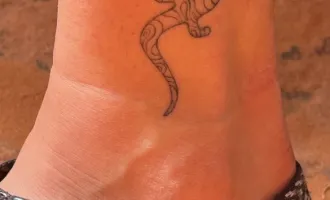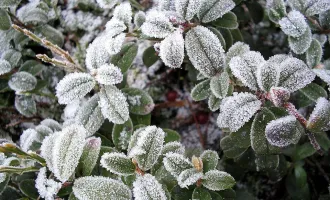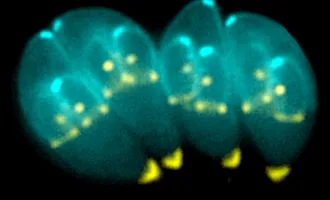Failure to Communicate, Part 2: Primary school
The scientific community and the general public aren’t known for agreeing on all the issues, to put it gently. For example, 88% of surveyed members of the American Association for the Advancement of Science think genetically modified foods are safe to eat.
The American public? Not so much — a mere 37% would dig into a plate of GMOs without some serious reservations.
I’m curious about where this gap in understanding comes from, and what we, both scientists and non-scientists alike, can do to bridge it.
Misinterpretation and poor presentation of scientific research interferes with our decisions about healthcare, policy, and lifestyle. In part one of this two-part series, we took a look at how scientists can help bridge the gap in communicating scientific findings to the general public through respectful discourse.
However, better scientific communication is a short-term solution.
It might result in a slight increase in general scientific literacy, but it depends on a public receptive to open, non-judgmental conversation on contentious topics. It’s like building half a bridge and leaving the other half unfinished.
For it to work, the public needs to start working on the bridge from their side as well.
If we’re going to make a long-term impact on people’s understanding and perception of science, we need to start at the stage where there’s ample opportunity for direct interaction with the field — childhood.
Grade school science classes shape how the adults of the future will perceive science. If taught well, science classes can provide non-scientists with the tools to roll up their sleeves and start building that bridge.
To illustrate how grade school gives rise to a persistent lack of scientific understanding, I’d like to give you a taste of what I experienced. To do that, we have to go back over a decade — not to a science classroom, but to my 8th grade history class.
Science friction
Toward the end of middle school, I noticed a change in my history classes: in every essay we wrote and every project we researched, we were required to cite at least one primary source. At the time it seemed like a small change, but it was an enlightening one.
Reading conflicting eyewitness accounts of John Wilkes Booth’s fiery demise, I began to realize that history was something of a moving target. A historian’s job wasn’t just to compile a list of facts, as I had originally thought.
Rather, historians had to pinpoint important information, then use it to reconstruct the past through critical interpretation.
Back then, I thought that scientists (like historians) spent their lives memorizing huge constellations of static facts, even if their facts were about the natural world rather than events of the past. But while my history teachers challenged my preconceived notions as they introduced the dynamic process of historical research, my science teachers failed to do the same.
Middle school brought an unpleasant transition away from the lab experiences of elementary school, where we had the chance to freely explore natural phenomena, the laws of physics or the movement of microorganisms.
We were no longer probing what was, to us, the great unknown. Instead, each lab was obviously contrived as an example to illustrate a fact we had already memorized from a packet of printed-out notes, exact copies of the teacher’s ancient overhead projector sheets.
By the time I reached senior year of high school, several biology labs had been replaced by videos and accompanying worksheets.
No matter the quantity of labs, the majority of public school science curricula fall short by presenting science as a dry, straightforward subject. It is understandably difficult for the public to get excited about science or to understand scientists’ perspectives when they’re taught as children that science is, on the whole, pretty much solved.
The truth is, the version of science taught in the classroom is nothing like the science done by scientists.
Science is a constantly evolving field, requiring critical thinking, creative experimental design, and an understanding of the research process to fully appreciate. In the classroom, theories are taught as if they have always been facts, even when they are the result of tens, hundreds, occasionally even thousands of years spent gathering evidence and puzzling over the results.
Importantly, rather than analyzing papers or original data (the scientific version of history class’s primary sources), students draw nearly all information about science from textbooks, secondary sources that provide a useful, but highly simplified (and conveniently disagreement-free) synthesis of the nuanced primary literature.
Midway through my undergraduate career, I finally realized that nearly all scientific theories were, at one point, contested. Both in the past and today, for every definitive study, there’s often another published that suggests the opposite.
Taken at face value, it might seem like this would undermine the validity of scientific conclusions.
However, challenges to prevailing notions force scientists to consider alternatives, prompting them to follow up their original experiments with even more careful investigations. It’s a back-and-forth, a continuous process of refinement that eventually leads to stronger evidence and greater progress towards the truth; it is essential to scientific progress.
Scientists are trained to deal with this lack of consensus by surveying the literature, discerning which experiments are trustworthy, and finally drawing conclusions based only on the results of multiple studies. They’re also given the necessary vocabulary to make sense of the literature in their field.
Nobody teaches these skills to non-scientists, and as result, they are limited in their ability to make sense of conflicting claims and have little choice but to take as fact whichever messages come through the loudest and clearest.
Unfortunately, teachers are not well equipped to bring this knowledge into the classroom. Most states do not require that science teachers have extensive — or even any — training in their subject of focus.
Few science teachers have had the necessary education to decipher primary literature, and even fewer have ever worked in a lab or interacted with research scientists. Of course, it isn’t fair to expect every teacher to spend their little free time slaving away over work that isn’t really related to the curriculum — they’re busy enough as it is.
Although it may not be realistic to require extensive higher science education of all grade school science instructors, short summer research internships could help ameliorate the problem.
By spending a portion of a summer taking ownership of a small research project and learning how to interpret and present data, teachers would have the unique opportunity to unite the perspectives of the scientist and the educator, and then bring their insight back to the classroom.
Some programs like this do exist. The National Science Foundation’s Research Experiences for Teachers (RETs) offer an invaluable but scarce resource to science educators; each participating university only takes about five to ten local teachers, who then conduct a six-week research project guided by a faculty member.
If programs like these were expanded and participation were encouraged, more teachers could benefit from a more intimate understanding of the scientific process. By extension, students could engage with a more accurate, more empowering concept of how science really works.
While opportunities for teachers remain sparse, positive change is on its way. In April of 2013, the Next Generation Science Standards (NGSS) were released for optional adoption by the states.
A joint effort between the National Research Council, the National Science Teachers Association, the American Association for the Advancement of Science, and a consortium of 26 states, the NGSS are the first national standards for science education released since 1996.
The NGSS focus on reshaping science pedagogy around evidence-based investigative problem solving and inquiry. These standards to help students better understand how science is done, how to identify reliable evidence, and how STEM disciplines can be blended to answer complex questions about the world.
Thus far, eighteen states plus Washington D.C. have adopted the NGSS. Spurred by the growing enthusiasm of teachers and the approval of STEM professionals, more educational resource companies are creating or adapting kits and curricula to follow.5
By changing the way today’s students experience science, the NGSS may be able to shift tomorrow’s public perception, cultivating in the next generation a deeper understanding of what it means to do scientific research.
Bridges, detectives, and other metaphors
There is still a lot of work to be done to bridge the communication gap between scientists and non-scientists.
If scientists are able to be a little more self-aware in conversation, avoid prescriptive interpretations of evidence, push for transparency in their work, and learn not to dismiss those who haven’t been exposed to scientific modes of thinking, they will help to build a better understanding of the beautifully messy thing that is the scientific process.
Further, if public education helps non-scientists to understand the nuances of the scientific process, to begin to approach primary data, to sort through trustworthy and less-trustworthy sources, they will have all the tools necessary to become detectives of their own, seeing patterns in the evidence, drawing conclusions, and developing theories that help them to rationalize their beliefs.
They will no longer ignore accuracy, reputability, or peer-review to instead rely on whichever source is the loudest. The general public will have the privilege of intellectual agency, the independence to examine issues from all sides and make informed decisions about the world around them.
Importantly, they will have gained freedom from blind trust and mistrust of the scientific establishment.
As I realized sitting uncomfortably in that course on evolution, even scientists could use the occasional reminder that something that sounds like dogma is likely more complicated than it seems.
I hope for a world where we can all take up the mantle of intellectual agency, where scientists and non-scientists alike can take responsibility for our beliefs, become detectives of our universe — where we can be creative, curious, endlessly questioning, and unafraid to cross the bridge to a world of truly inclusive, respectful scientific discourse.



